Epidemiological, Characteristics and Outcomes of Hip Fracture Among Patients in Baghdad
Introduction
Hip fracture is a particularly life-threatening injury to elderly
people [1]. One in three adults over the age of 50 dies each year
from hip fractures, and the risk of older people is five to eight times
higher during the first three months of hip fracture compared to the
healthy adults [2,3]. In addition to the excruciating pain suffered
by those with hip fractures, they also lose part of their physical
functions, their social life diminishes, their dependence on others
increases, and their lives deteriorate in general [4]. Many hip
fracture sufferers are forced to change their lifestyles, some move
from their home to live in a nursing home [5]. Ultimately, the rapid
deterioration in the elderly life following a hip fracture is a bad
indicator of their health [6]. With advancing age, the rate of hip
fractures increases dramatically to people with age 50 to 65 years
and over [7].
Also, the cognitive impairment, such as dementia, increases
the risk of falling; general fatigue; visual impairment; taking a
combination of medications [8]. Ordinary home hazards increase
the odds of falling [9]. Injuries often occur as a result of a fall, or
the thigh hits a hard object such as a kitchen sink [10]. Injury can
also occur as a result of light ; even no trauma when getting up, for example, osteoporosis: low bone mass and deterioration of
bone tissue increase the risk of hip fractures in the elderly [11]. For
some reason that is not clear, femoral fractures disproportionately
affect the socially disadvantaged [12]. The presence of previous
fractures, as previous research indicated that about 30% of people
with fractures of the thigh bones had a previous fracture in what
is known as complication fractures [13]. The risk of fracture
recurrence persists in ten years, which illustrates the importance of
treating primary fractures quickly and effectively [14]. Treatment
options include surgery, and statistics indicated that more than
three-quarters of people with a broken hip undergo surgery, often
a joint replacement [15]. Surgical intervention usually occurs to
48 hours [16]. The patient’s health condition may significantly
increase the risk of death [17].
In addition to, some complication such infection, internal
bleeding, stroke, or heart failure and it’s in sometimes leads to
death after hip fractures [18]. Studies show that problems with
treatment, surgery, or immobility (which can put the patient at
risk of pneumonia) as a result of fractures eventually lead to other
complications that increase the rate of early death [19,20]. In
parallel with the treatment of postoperative pain and symptoms,
patients should be rehabilitated and, physical training performed
to ensure that mobility is restored [21]. A retrospective study
conducted among 36 of hip fracture in Ireland, were recorded in
2020, compared with 45 in 2019, resulting in a 20% reduction
in presentations. Thirty-day mortality in hip fractures during
the Covid-19 crisis was 8.3% compared with 2.2% in 2020. The
epidemiological study conducted among 232 patients in Al- Najaf
– Iraq found that the female to male ratio was 2:1.The mean age
for this group was 68 years. The causes of the fracture were fall in
83%, fall from height in 11%, and road traffic accident in 6%. A case
control study conducted in Iraq among 75 cases and 150 controls
found that the highest risk factors associated with increased
occurrence of hip fracture were using cortisone, Osteoporosis,
tobacco smoking, consuming soft drinks, and less exposure to
sunlight.
Hip fracture is as yet thought to be quite possibly the most
genuine medical services issues, notwithstanding numerous
analysts concern. Also, regardless of some proof of genuine declining
in the commonness pace of hip fracture, it is as yet considered as a
steady reason for extreme dreariness, unsatisfied life quality and
early mortality among more seasoned grown-ups. Also, in light
of the fact that the administration conventions are not all around
applied around the world, it is required to see an expanded, instead
of diminished yearly frequency of hip fracture throughout the
following not many years [6]. As it is known, there are intracapsular
and extracapsular fractures; the AVN (avnascular necrosis) is the
most hazardous difficulty of the intracapsular fractures [2]. There
is little information about the epidemiology of hip fractures in
Iraq, and the main danger variables of this handicapping break.
Forestalling the event of hip fracture is a general wellbeing need
in our general public, given the continuous change to the supermaturing
society. The danger for hip fracture can be decreased
by forestalling falls. Distinguish those people most in danger of
tumbling to boost the adequacy of any proposed general wellbeing
and family nursing mediations [13]. From this point, this study
aimed to assess the characteristics of patients with hip fractures
and, also to identify the complication and outcomes of hip fractures
among them during the study period.
Materials and Methods
A cross-sectional study was conducted at Al-Wasiti Hospital for Plastic and Orthopedics surgery in Baghdad from 15th of January to the end of April 2021 to evaluate the demographic; characteristics of the participants and, to determine the complications of hip fracture and outcomes during the study period. Sample size was 91 patients. Randomly selection was chosen from the list of patients that admitted to outpatient’s clinic and they had hip fractures.
Inclusion and Exclusion Criteria
The inclusion criteria were the age groups above 50 years and already had hip fracture and the ages less than 50 years and those with other fractures in other parts of the body and also, those with other diseases and those with hip fracture and occurred before were excluded from this study.
Ethical Clearance
Ethical approvals for conducting this research were obtained from the Iraqi Ministry of Health under number 11457 in 31/12/2020 and also, oral consent from the participants was obtained from them before starting to collect the data.
Data Collection
Characteristics features and risk factors were also, recorded. From the medical records, additional information was recorded such patients’ condition before the fracture as (residence, type of activity, physical and mental condition, fracture history), cause of fracture as (falls from height, tumble, traffic accident, un focusing due to illness), age, sex, height, weight to calculate the BMI. Major chronic disease included diabetes were categorized to yes or no, hypertension (yes or no), and osteoporosis (yes or no). Fracture and treatment details including fracture type(Sub capital, Pertrochanteric, Sub-trochanteric), treatment modalities, surgical procedures were categorized as (partial hip replacement, dynamic hip screw, cannulated screw), complications were categorized to (pneumonia, heart failure, severe arrhythmia, artificial joint dislocation, electrolytic imbalance, bed sore, urinary infection), length stay in hospital were categorized to (less than 15 days , 15 to 21 days. More than 21 days) , for outcomes is classified to (improved, recovery , death), were also collected. Age was stratified according to four different ages based groups: 50 to 59 years old, 60 to 69 years, 70 to 79 years, and above 80 years. The BMI was stratified into four groups: less than 18.5, 18.5 to 24.9, 25.0 to 29.9, and equal 30 or greater and it are measured by kg/m2.
Statistical Analysis
All data was entered into the Excel program before starting the analysis to ensure the validity and accuracy of the data. STATA 13 software was used for statistical analysis. With continuous variables were calculating and assessing the mean, median, standard deviation. The Chi-Square Test of Independence is used to test if two categorical variables are associated. It also used to see if there is a difference between two or more groups. Univariate analysis was used to describe the data and find patterns that exist on it and, use the tables as (mean, standard variation and range), charts, and histograms for univariate analysis. In addition to, multivariate analysis was used to analysis the data that contain more than one variable. Multivariate Analysis of Variance (MANOVA) was used to examine the dependence relationship between a set of dependent measures across a set of groups. Use this command of STATA program manova, mvreg for multivariate analysis. Statistically significant was set at the p. value < 0.05.
Results
In Table 1 Out of 91 participants with hip fractures, the mean age was 72.4 with SD 10.2 years. Majority 31.9% (29/91) of hip fractures occurred among age group 70 to 79 years old and followed by the same frequency 27.5% (25/91) in each age groups 60-69 and ≥ 80 years old, respectively. Male cases 51.7% were slightly more than 48.3% in female cases. Half of them were married. The mean of frequency to had hip fracture was 1.41 ± 0.66 times and, most of whom 69.2% had a hip fracture for the first time and 63.7% had history of smoking. Majority 78% of them had history of diabetes disease. While 22% of them had history of hypertension disease and, 62.6% had history of osteoporosis disease. Thirty nine of them had a sub capital of fracture and thirty four had overweight BMI. For treatment, partial hip replacements 45.1% were the main types of operation as show in Figure 1. Tumble and fall from the height 38.5% were the main causes of hip fractures, followed by 23% were the traffic accident and its show in Figure 2. The highest frequency 36.2% of them had long time to stay in hospital with range 15 to 21 days and, the mean was 1.93 ± 0.80 day (Figure 3).
According to complication from hip fractures, 17.8% of them had pneumonia disease as results of hip fracture complication as show in Figure 4. In Figure 5, show that 84.7% of them were recovering and improving their health from hip fracture and, 15.3% were died due to fracture complications. Univariate and Multivariate analysis showed that male sex, marital status, diabetes and osteoporosis were independent risk factors for complications of hip fracture among the studied samples. Our results indicated that male patients had greater risks of hip fracture complications than female patients (odds ratio [OR] = 1.7; 95% CI 1.23-2.96). Patients with diabetes diseases were more likely to suffer from hip fracture complications than those without diabetes diseases (OR = 1.43; 95% CI 1.87–2.20). Patients with higher osteoporosis were more likely to suffer from hip fracture complications than patients with lower results (OR = 1.15; 95% CI 1.23–4.34) (Table 2).
Discussion
This study aimed to assess the characteristics, complication and
outcomes of hip fractures among patients during the study period.
In Table 1 our findings reveals to the mean age was 72.4 with SD
10.2 years and compared with other study in UK [22], they reported
the average age of hip fracture are 83 for women and 84 for men. A
study in China [23], they mentioned the average age of hip fracture
patients was 82.20 ± 6.82 years old; this may be differences in
lifestyle between the countries. In this study, we found that the
majority 31.9% (29/91) of them still in the age groups 70 to 79 years
old and followed by the same frequency 27.5% in each age group
60-69 and ≥ 80 years old. A study done it in China [23], the authors
reported the higher frequency of hip fracture occurred in the age
groups 80- 84 years and 85-89 years old. This refers to differences
in life expectancy between countries. Also we found the male cases
51.7 % were slightly more than 48.3% female cases .Compared with
other study in Spain [24], the investigators reported the incidence
rate of hip fracture among women was 3 times higher than in men.
This is due to women doing their jobs of home and work and not
finding enough time to eat healthy food.
In this study, 57.1% of patients were married ; compare with
other study in Sweden [25], they mentioned the divorced, widowed
or unmarried women had a higher risk of hip fracture than married
or cohabiting women; the OR was 1.40 (95% CI 1.06-1.85). This
fact because of her does not have a breadwinner in her life, or she
resorts to looking for a job and not taking care of her health and
eating if she does not have money or a job. Smoking is a key factor
of increasing pulmonary diseases, especially among the older and
addicted. In this study we found 63.7% of patients had a history of
smoking habits. In some previous studies, current smokers have had
approximately a 50% increased risk of hip fracture, as compared
with never smokers. In contrast to our findings, some studies have
reported higher hip fracture risks of heavier smokers than among
lighter smokers [26-29] Diabetes is a common chronic disease
among the elderly people and their impact on human health. In this
study, we found that 78% of them had history of diabetes disease.
A study done it in Canada [30], the authors reported that the
diabetes was associated with hip fracture in both gender with 20%
and, the danger of fracture remains higher after adjustment. High
blood pressure is causes of hip fracture due to fall and, because
of that, they are not focusing and realizing what happened. In our
study we found that only 22% of them had history of hypertension
disease and compared with other study in Sweden [31], the author
reported the hypertension was related to hip fracture. Osteoporosis
is also an essential factor of the fracture; this disease causes bones
to become weak and porous, increasing the risk of fracture.
Women are four times more likely to have osteoporosis than
men [32]. Our finding refer to the sixty three percent had history
of osteoporosis disease. Compare with other study in Chile [33],
they mentioned the most of the osteoporotic hip fractures occur to
women, representing approximately 75% of these fractures. Sub
capital fracture is the most common type of intracapsular neck of
femur fracture. The fracture lines to extend for the junction of the
head and neck of femur. In this study we found the sub capital of
fracture is considered the main type of fracture and shows in 42.9%
from them. Most of these people are suffering from excessive weight
and obesity that inevitably affect their health and restrict their
movement which is one of the most important problems between
the elderly people. In our study we found that 37.5% of them had
overweight BMI and compared with other study in Norway [34],
they reported the increasing of BMI lead to decrease the risk of hip
fracture and another study in France; they mentioned the low BMI
independently increased the risk of fractures [35].This difference in
view is due to the difference in the lifestyle between countries and
the factors that cause hip fracture.
Partial hip replacements are the main operation procedure
were using for it and shows in 45.1%. Compared with a study done
it in Sweden [15], the hip replacements were the fundamental
procedure which is using for it especially among elderly. The main
causes of hip fractures was tumbling and fall from the height and
shows in 38.5% compared with other study in New Zealand (10),
they reported the majority were fall and exposed to traffic accident.
In this study, we found the highest frequency 36.2% of whom has
long time to stay in the hospital started from 15 to 21 days and
compared with other study in Korea [36], they reported the average
length of stay was 30.7 days (standard deviation 24.5 days). In our
study, we found that 17.8% of them had pneumonia disease as
results of hip fracture complication and compared with other study
in US [19], they reported the most of them has hip replacement,
do not have any medical complication after operation. Severe
pulmonary and cardiac conditions had an effect on the rate of
infection and death, and a patient with more than one complication
has poor survival prospects.
Multivariate analysis showed that male sex, marital status,
diabetes and osteoporosis were independent risk factors for
complications of hip fracture among the studied samples. Our
results indicated that male patients had greater risks of hip
fracture complications than female patients (odds ratio [OR] =
1.7; 95% CI 1.23-2.96). Patients with diabetes diseases were more
likely to suffer from hip fracture complications than those without
diabetes diseases (OR = 1.43; 95% CI 1.87–2.20). Patients with
higher osteoporosis were more likely to suffer from hip fracture
complications than patients with lower results (OR = 1.15; 95%
CI 1.23–4.34). Compared with a study in China [23], the authors
indicated that male patients had greater risks of perioperative
complications than female patients (odds ratio [OR] = 1.987; 95%
CI 1.118–3.531). Patients with respiratory diseases were more
likely to suffer from perioperative complications than those without
respiratory diseases (OR = 0.044; 95% CI 0.010–0.200).
Limitation of this Study
This study has several limitations. First, short duration of the study, it may be one of the limitations of this study. Second, small sample size, this may impact the adverse outcomes has the injuries were comparable. Third, Interviewer bias: biases introduced by the interviewer can directly affect the validity and reliability of the ultimate findings of the study, lastly, respondents may distort information to present what they perceive as a more favorable impression and this is type of interviewer bias and it’s called social desirability
Prospects of this Study
a) Enhance the educational and support programs for patients
and their families through health institutions or civil society
organizations.
b) Administrative protocols based on research results obtained
in treatment, care, prevention and management of burns
and burn patients. As well as providing social and economic
strategies in the field of research and consultation with policy
makers to help burn programs.
c) Carry out joint research projects with other research centers
and organizations.
Conclusion
we concluded that the hip fracture occurred among those in age group 70 to 79 years old; male cases had higher frequency of hip fracture; were married; majority of them had history of chronic disease. Most of them had overweight BMI. Partial hip replacements were the main operations that use it. Tumble and fall from the height were the main causes of hip fractures .Majority of them had pneumonia disease as results of hip fracture complication. Male sex, marital status, diabetes and osteoporosis were independent risk factors for complications of hip fracture among the studied samples.
For more
Articles on : https://biomedres01.blogspot.com/
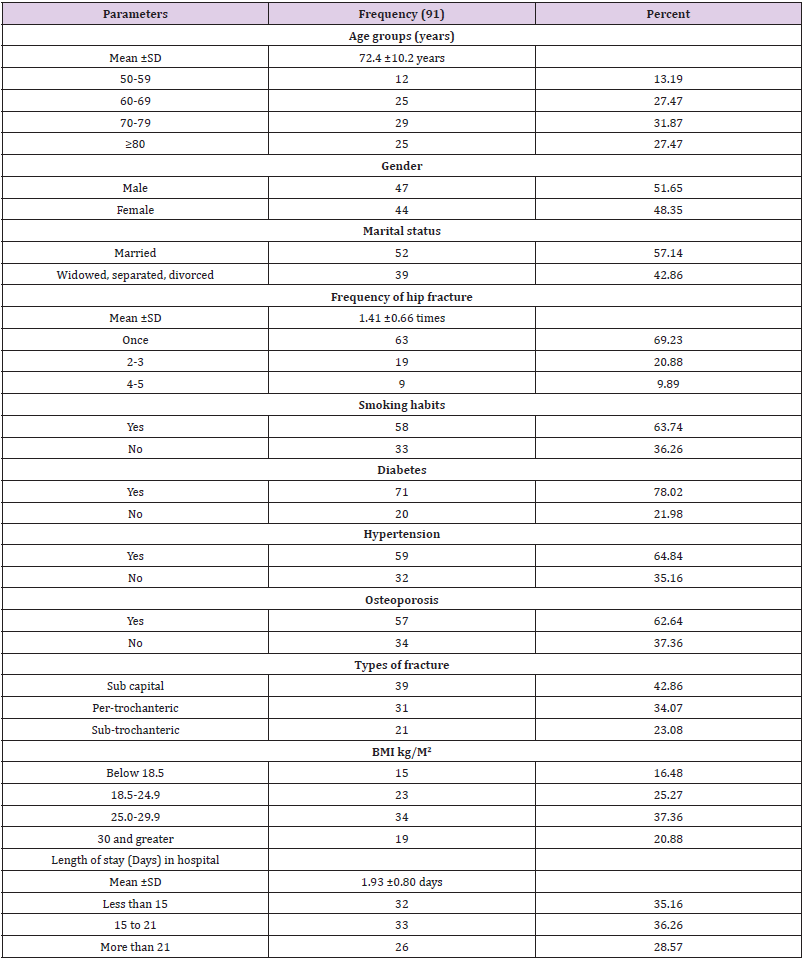
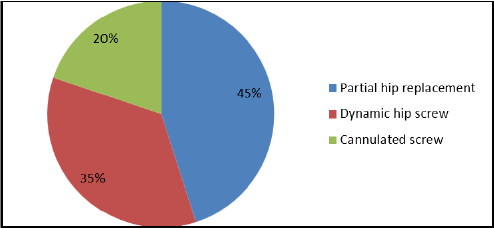
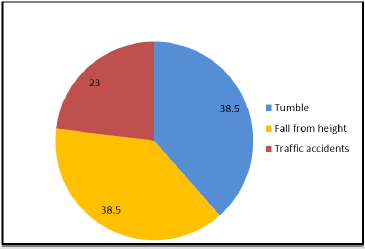
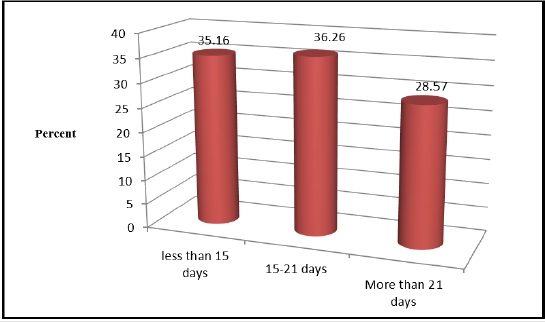
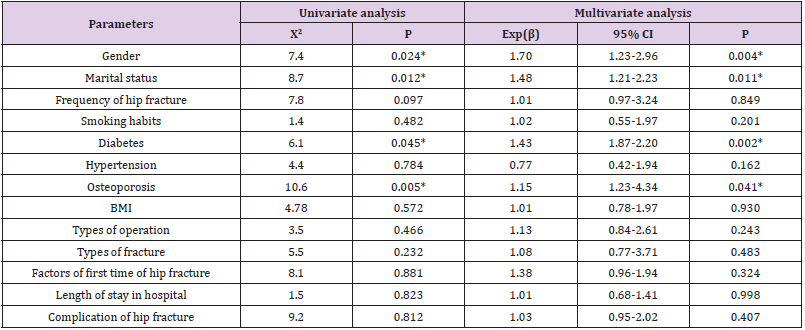
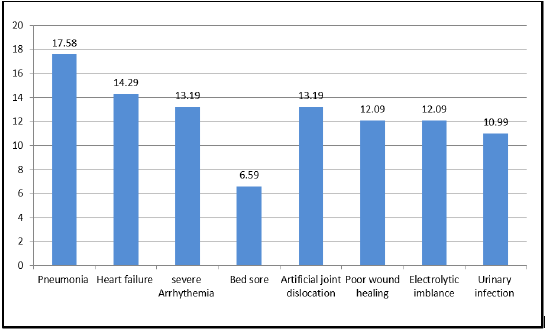
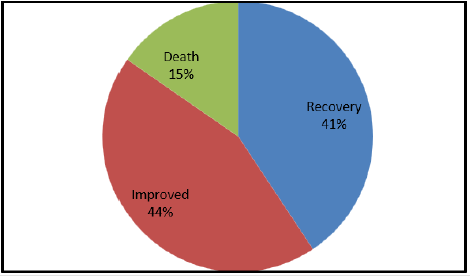


No comments:
Post a Comment
Note: Only a member of this blog may post a comment.